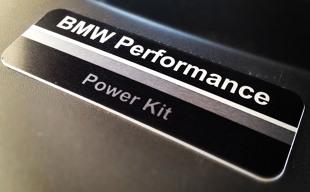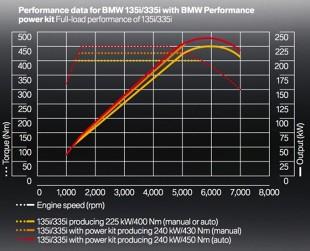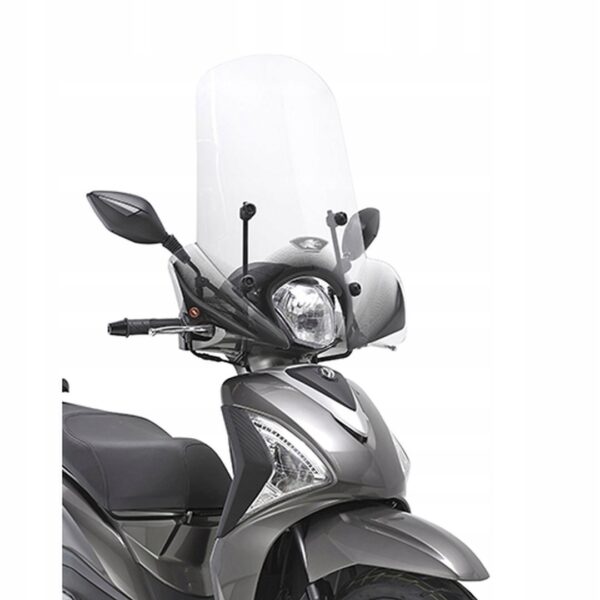
Chip tuning. Easy power gain or engine failure?
 Dreaming of more power in your car, but don't want that increase to reduce the durability of your car's components and don't want to overpay for a distributor? If you answer yes to all questions, you will probably be interested in electronic tuning.
Dreaming of more power in your car, but don't want that increase to reduce the durability of your car's components and don't want to overpay for a distributor? If you answer yes to all questions, you will probably be interested in electronic tuning.
Krzysztof is the owner of a 4 Audi A7 B2.0 Avant 2007 TDI. His car recently passed the 300 mark. km and still reliably serves every day. There would be nothing extraordinary in this if it were not for the fact that with a run of 150 0,1 km, Krzysztof decided to increase the power of his engine with the help of electronics. A slight change in the injection map and a minimal increase in boost pressure (only 30 bar) showed a power increase of 170 hp on the dynamometer. (140 hp instead of 56 hp) and an additional 376 Nm of torque (320 Nm instead of the previous ones). 0,5 Nm). Fuel consumption has also been reduced to a minimum - by about 100 l / 150 km. With more than 250 miles since the modification, there is no sign that the durability of the engine or other components has been compromised – yes, the turbocharger needed XNUMX miles of regeneration, but its repair at that mileage was nothing out of the ordinary. The clutch, dual-mass wheel and other engine parts are still original and show no signs of wear.
See also: driver's license. Code 96 for category B trailer towing
Electronic tuning has been extremely popular in recent years. On the other hand, he has as many opponents as supporters. Those who are against such a decision argue that increasing engine power to that which is not adapted to it can do more harm than good, and when exposed to greater loads than those calculated at the factory, the car's elements will wear out. comes out faster.
Where is the truth?
 Of course, each engine installed on a car at the factory has its own power reserves. If this were not the case, its durability would be very low. In addition, many car models are sold with one unit of different power options - for example, a two-liter diesel from a BMW 3 series can have an output of 116 hp. (designation 316d) or 190 hp (designation 320d). Of course, it differs in attachments (turbocharger, more efficient nozzles), but this is not a completely different unit. Manufacturers are happy that by developing one engine in multiple power options, they can charge exorbitant surcharges for extra horsepower. In addition, in some countries, the cost of car insurance is made dependent on its power - therefore, engines are “artificially” throttled already at the production stage. It is no coincidence that we mentioned diesel engines - they, as well as supercharged gasoline units, are the most susceptible to power increase and best tolerate this procedure. In the case of naturally aspirated engines, do not believe the promises of a large (more than 10%) increase in power. Improvements in this case can bring only a small benefit - a decrease in maximum power and torque and a symbolic reduction in fuel consumption.
Of course, each engine installed on a car at the factory has its own power reserves. If this were not the case, its durability would be very low. In addition, many car models are sold with one unit of different power options - for example, a two-liter diesel from a BMW 3 series can have an output of 116 hp. (designation 316d) or 190 hp (designation 320d). Of course, it differs in attachments (turbocharger, more efficient nozzles), but this is not a completely different unit. Manufacturers are happy that by developing one engine in multiple power options, they can charge exorbitant surcharges for extra horsepower. In addition, in some countries, the cost of car insurance is made dependent on its power - therefore, engines are “artificially” throttled already at the production stage. It is no coincidence that we mentioned diesel engines - they, as well as supercharged gasoline units, are the most susceptible to power increase and best tolerate this procedure. In the case of naturally aspirated engines, do not believe the promises of a large (more than 10%) increase in power. Improvements in this case can bring only a small benefit - a decrease in maximum power and torque and a symbolic reduction in fuel consumption.
See also: Fiat 500C in our test
Why is this happening?
Well, in the case of a supercharged engine, you can modify more parameters - these include: fuel dose, ignition timing and angle (in a diesel engine - injection), boost pressure and the maximum allowable engine speed.
Before we start changing the control software, we should carefully study the technical condition of the car - it may turn out that the power shortage that worries us is associated with some kind of breakdown - for example, faulty nozzles, a worn turbocharger, a leaky intake, a faulty flow meter. or the catalytic converter is clogged. Only by eliminating all the faults, or making sure that the technical side of our car is impeccable, you can get to work.
changes

The whole art of electronic tuning is to fine-tune the modification so as not to overload the unit or other components of the car. An experienced mechanic will know the factory life limit of individual vehicle components and will make adjustments to approach that limit without exceeding it. Thoughtless acceleration of power without control can quickly lead to serious malfunctions - failure of the turbocharger or even an engine explosion! For this reason, setting everything on the dyno is critical. There, properly calibrated hardware will constantly monitor the increase in power and torque to reach the intended assumptions.
There are two types of electronic modifications - the first is the so-called. Power supplies that are connected to the vehicle's electrical system and do not change the factory settings of the engine controller. This solution is most often used in the case of new vehicles under warranty, modifications to which may void the warranty. If the car is taken to an authorized service center, for example, for inspection, users can disassemble the power supply and make the modification invisible. The second type of modification is the download of new software directly to the engine controller, most often through the OBD connector. Thanks to this, the new program can be perfectly adjusted to the technical condition of the vehicle, taking into account the wear of all its components.
When deciding on electronic modifications, it is important to entrust the entire operation to the appropriate workshop. Avoid offers that bypass a thorough check of the technical condition of the car and do not allow you to check everything on the dyno. Reputable points will offer us accurate prints confirming the scope of improvements, and we will also receive a guarantee for the service provided. When testing on a dynamometer, pay attention to the parameters of air temperature and atmospheric pressure. They should be as close as possible to the real ones that we meet on the road. If they differ, the measurement result may also differ from reality.
Summation
You should not be afraid of chip tuning and, in principle, it can be done on any car suitable for it - excluding cars with mechanical injection control. Before this procedure, you need to very carefully check the technical condition of the car, eliminate all its defects and find a proven workshop with extensive experience in modifying this type. Any apparent savings or attempts to "cut corners" will sooner or later take revenge. And it won't be cheap revenge.

